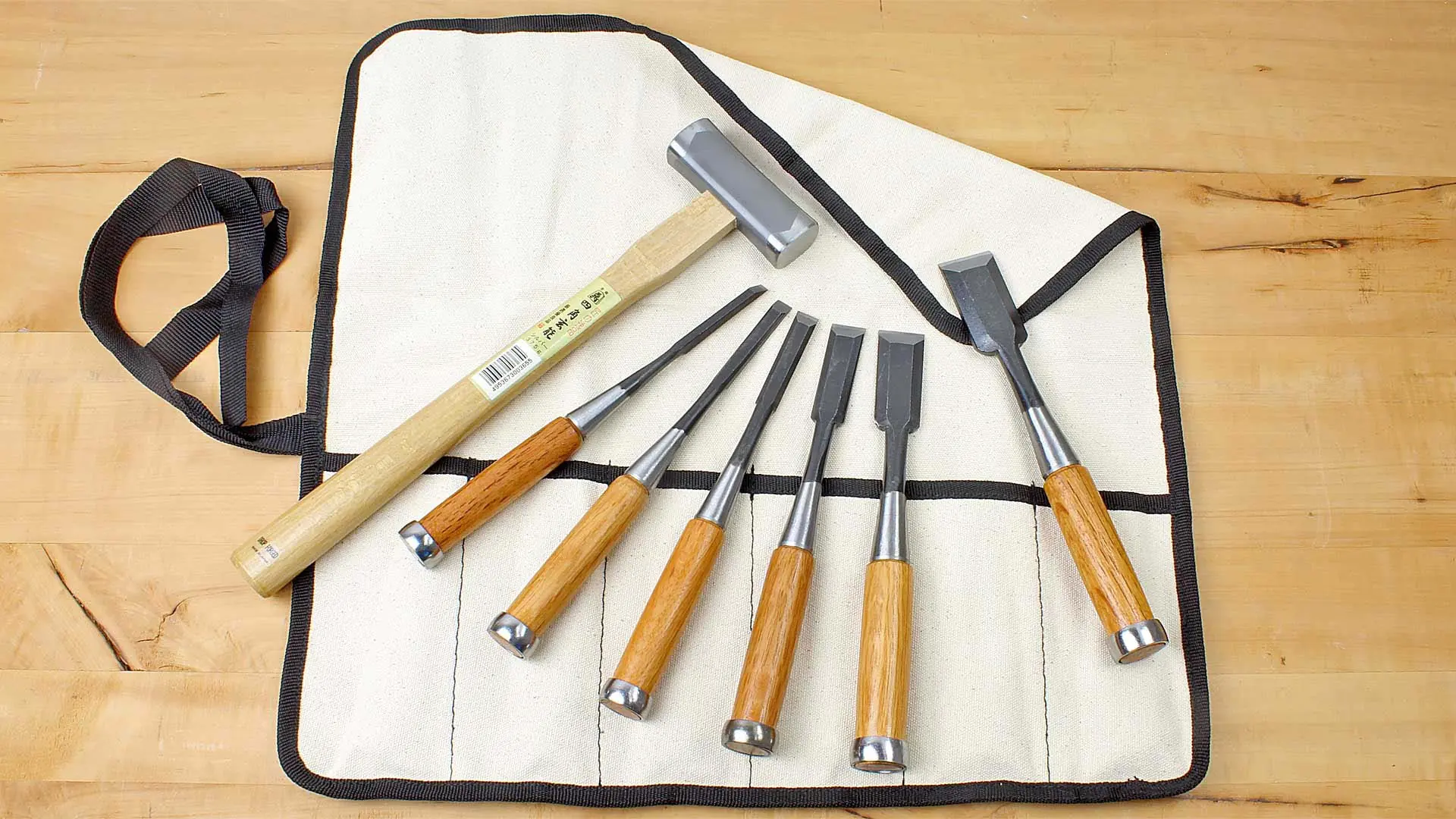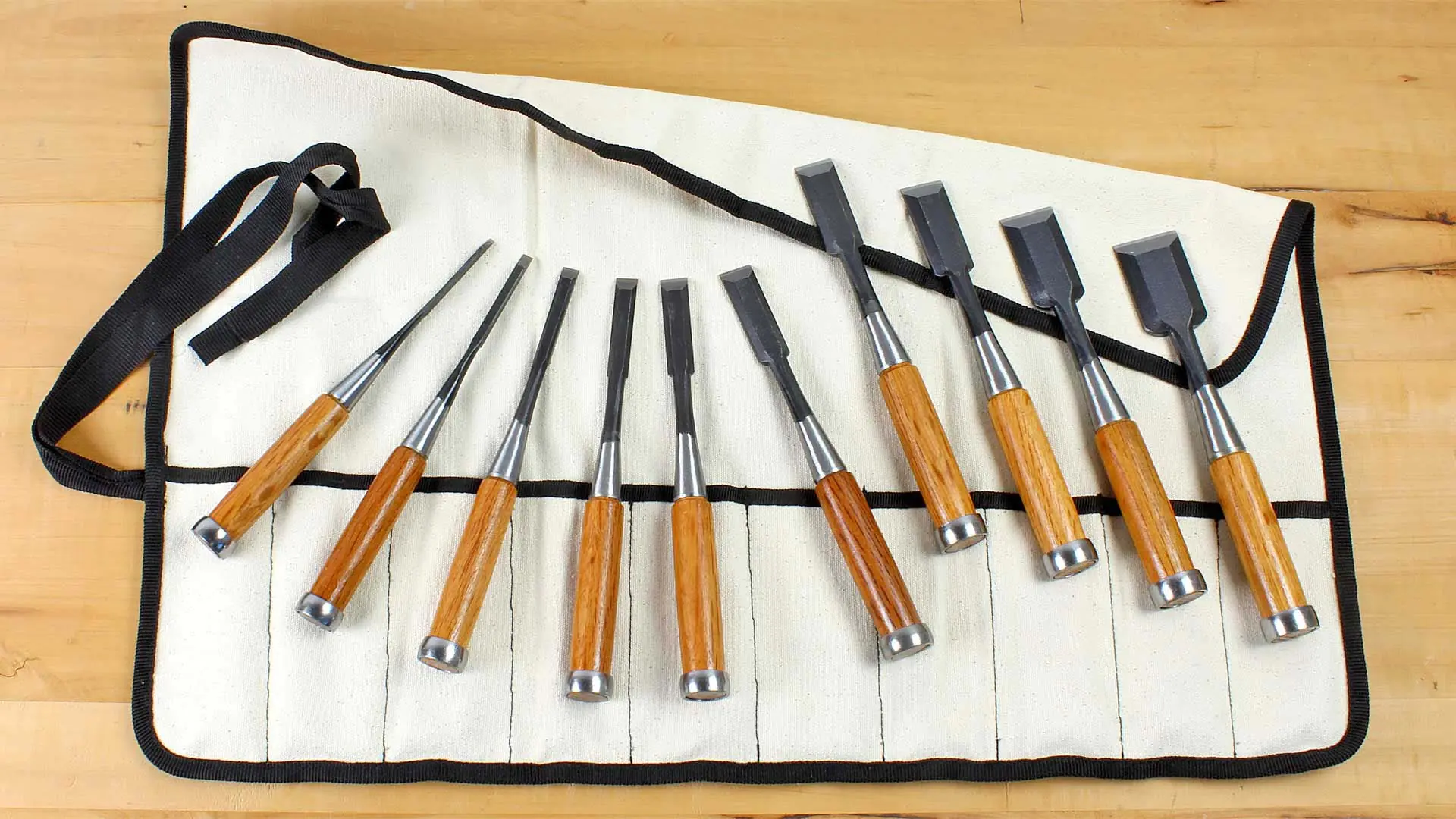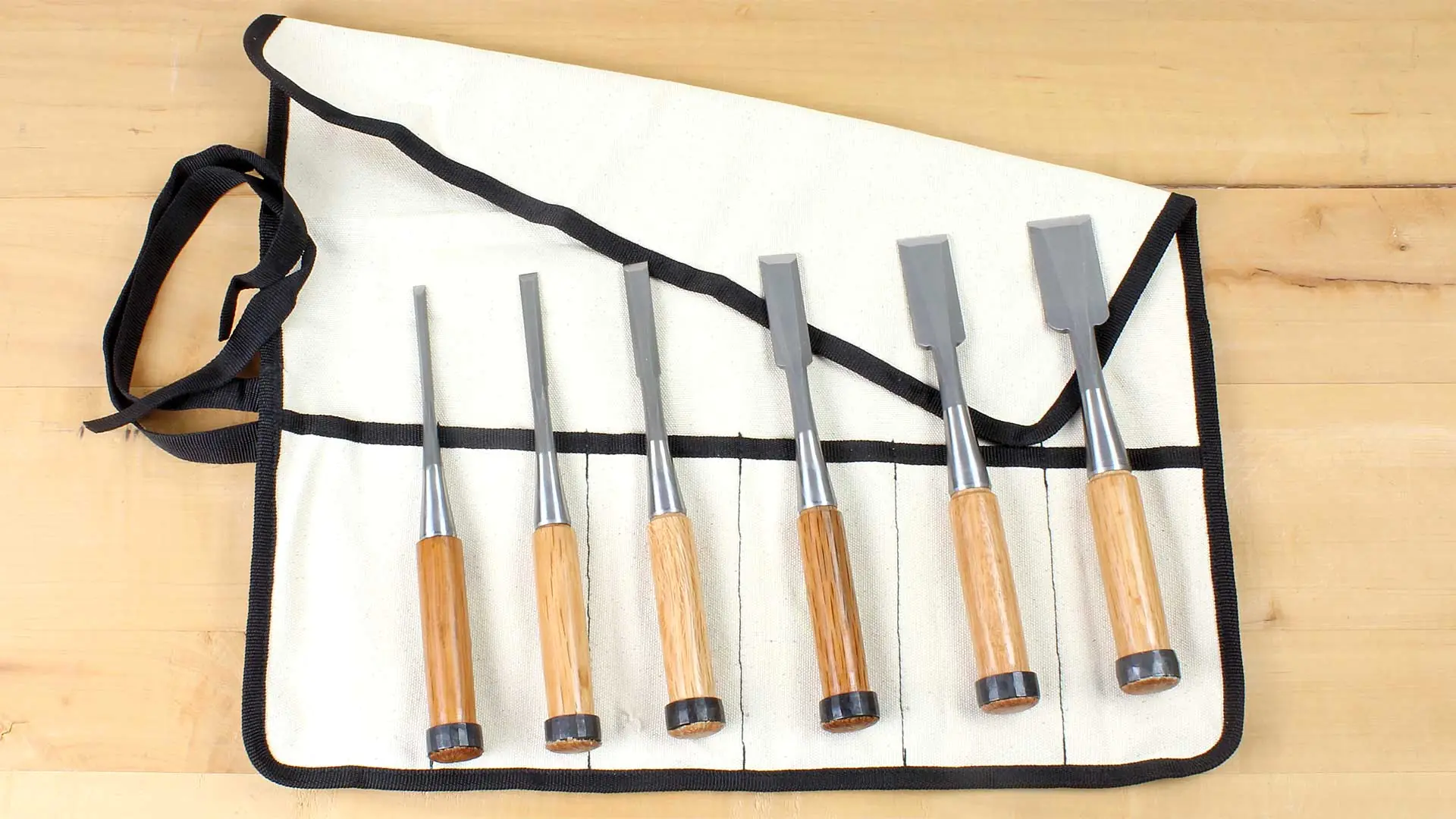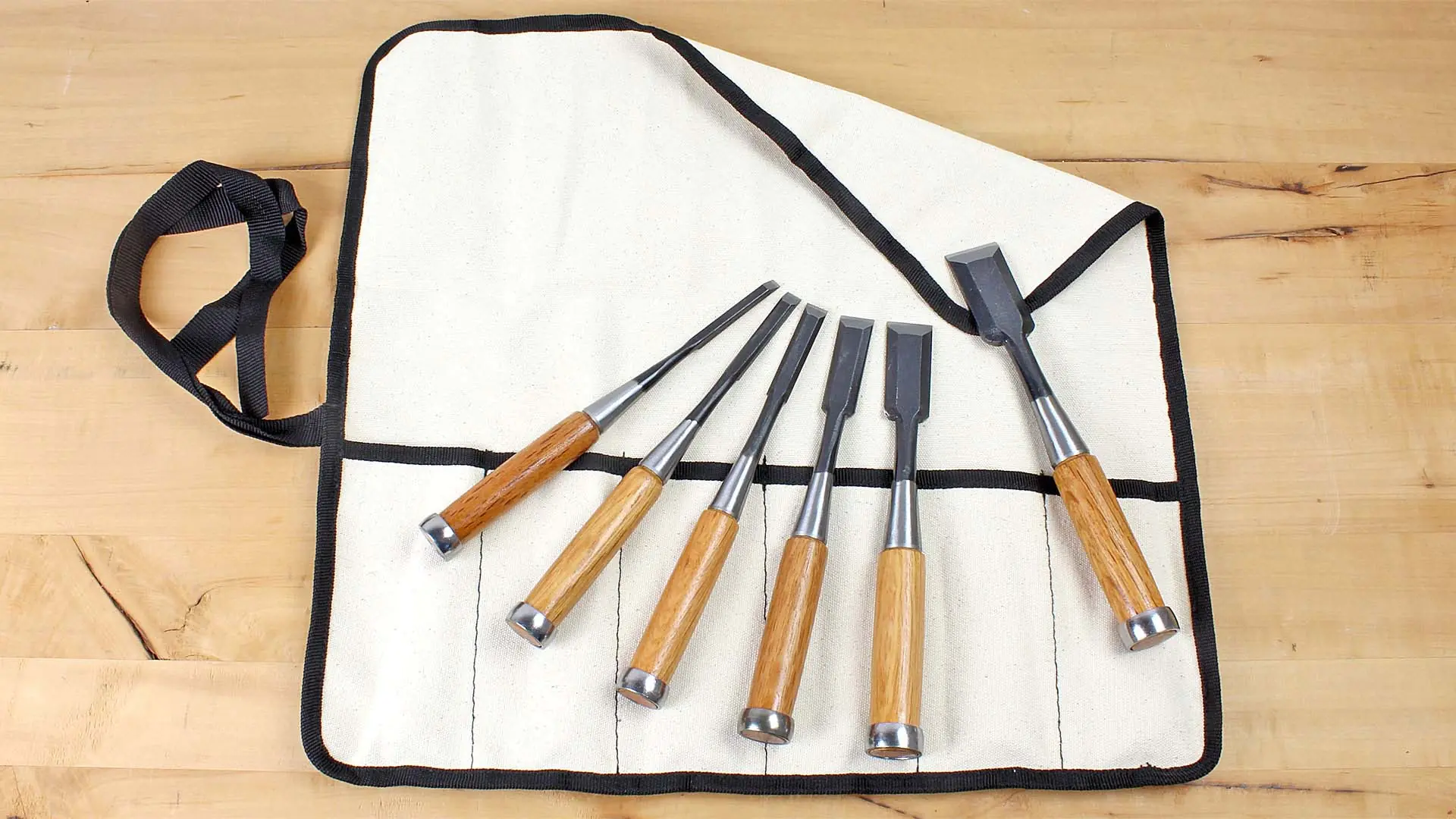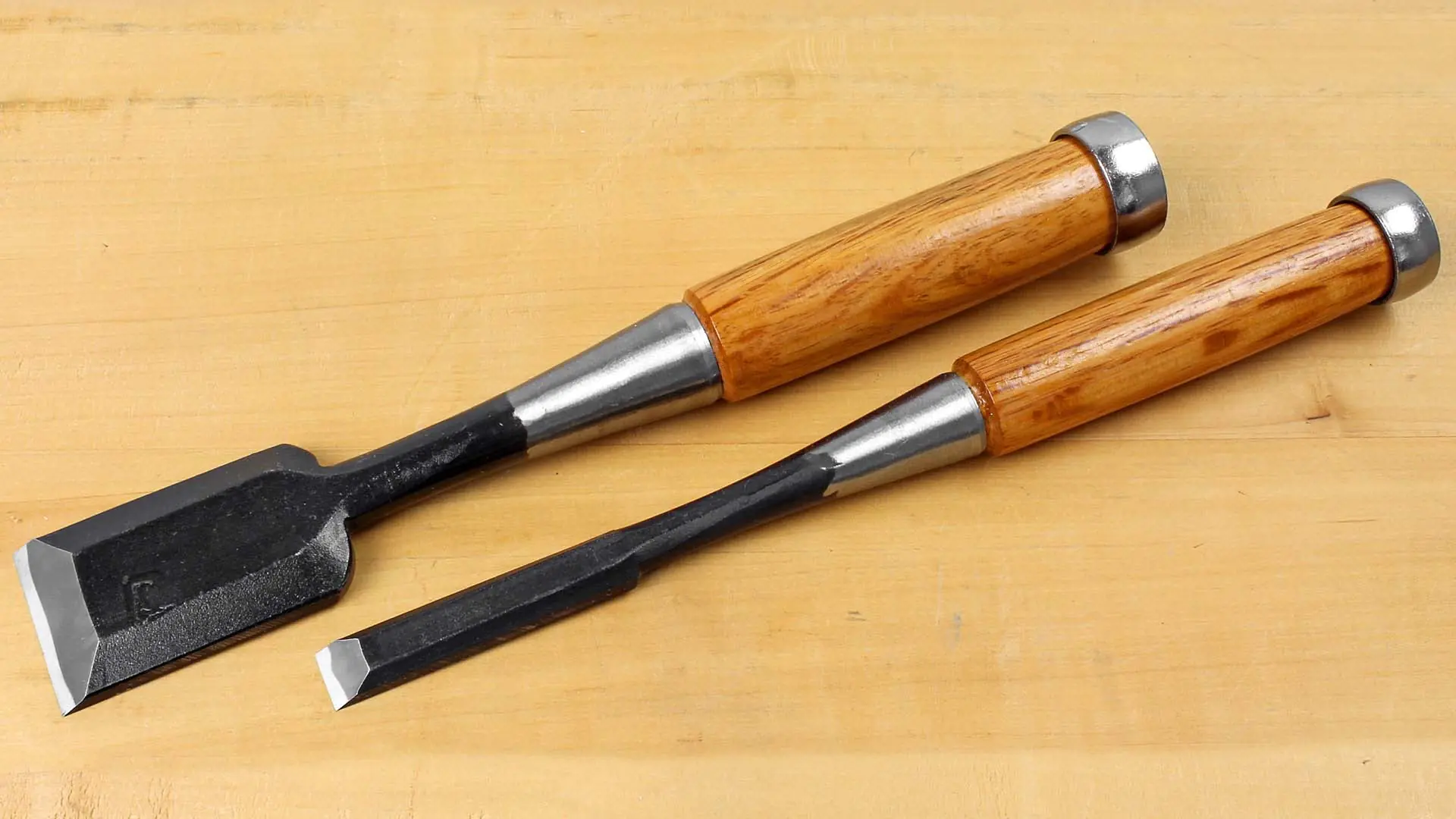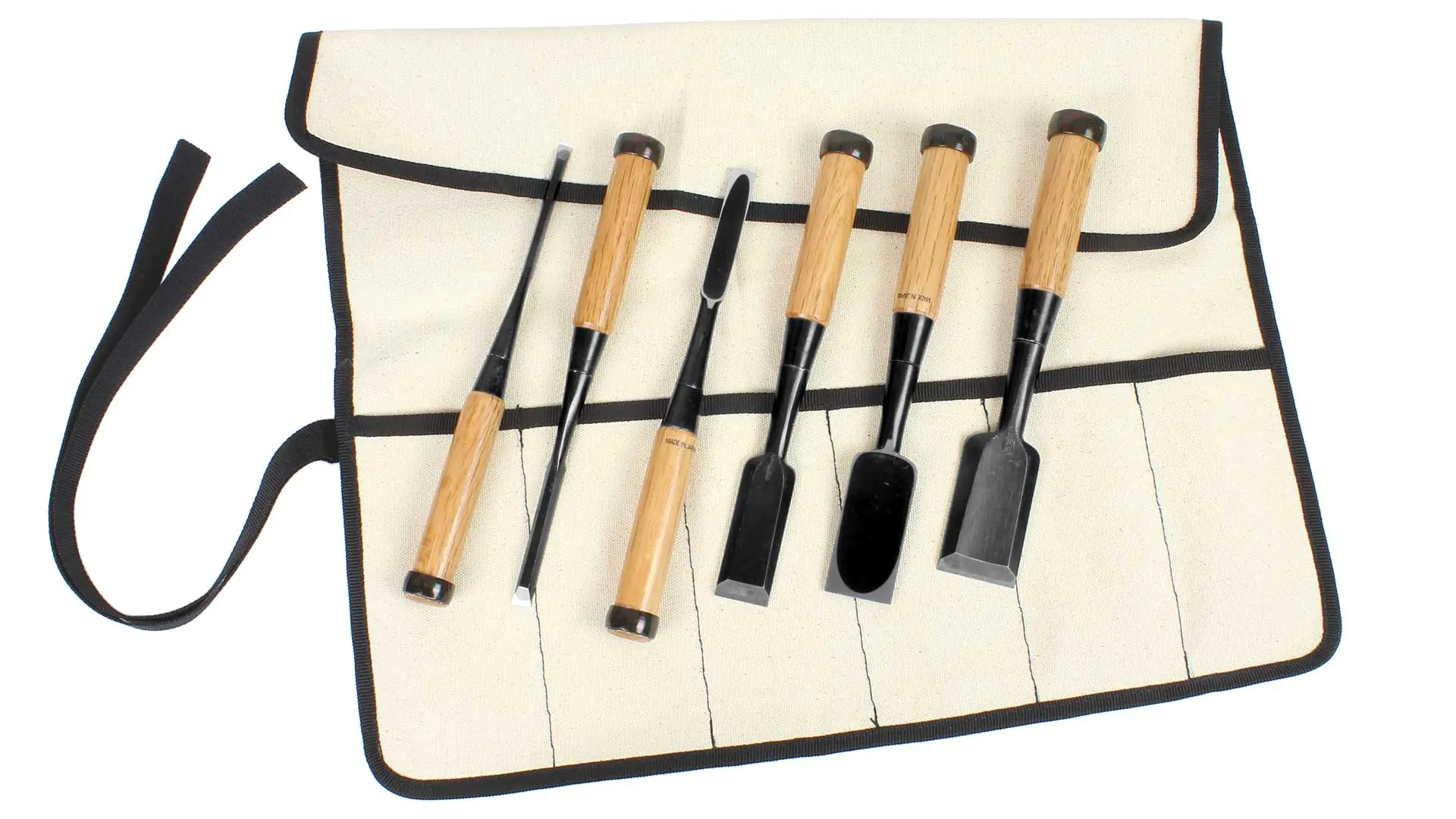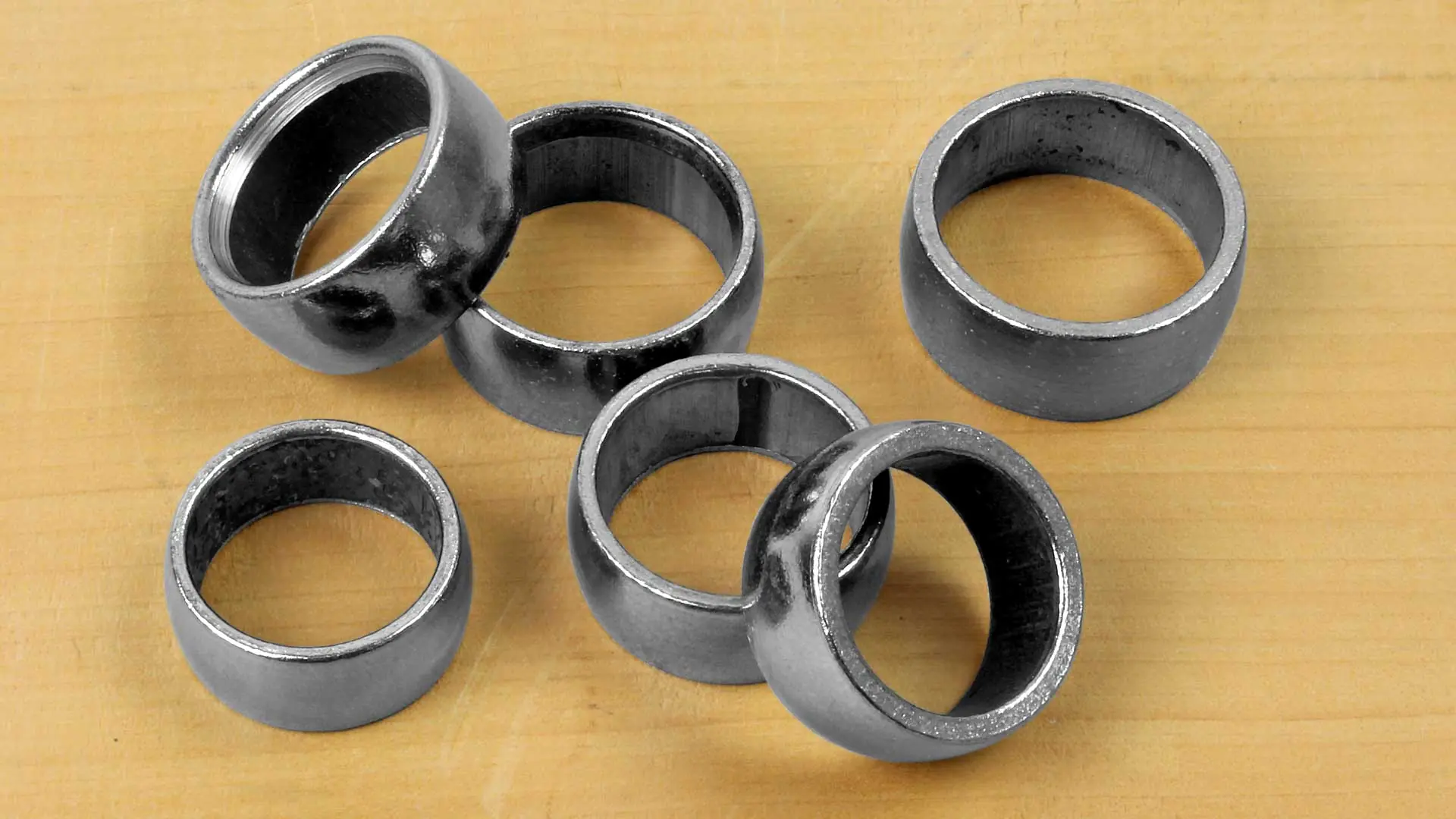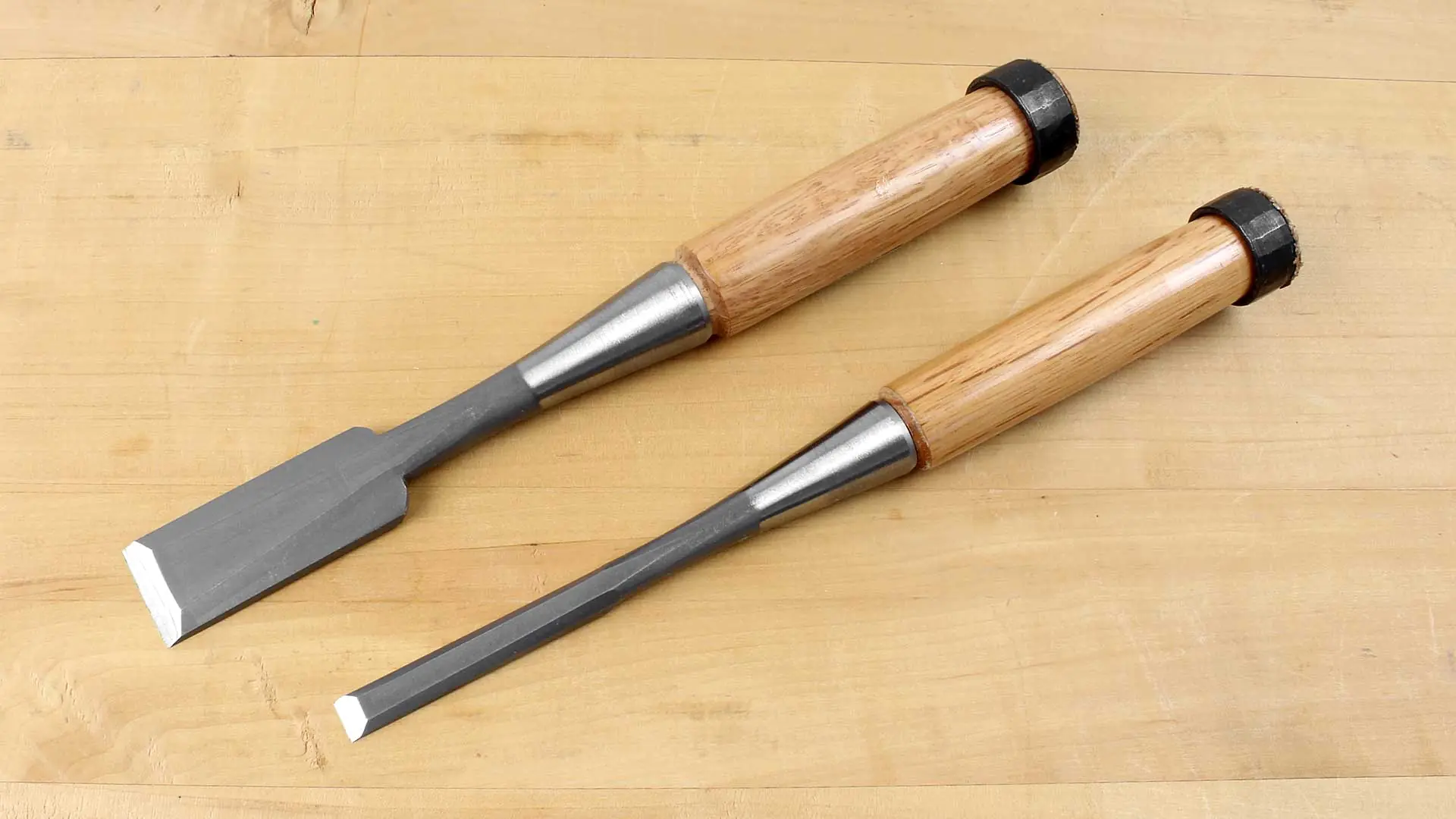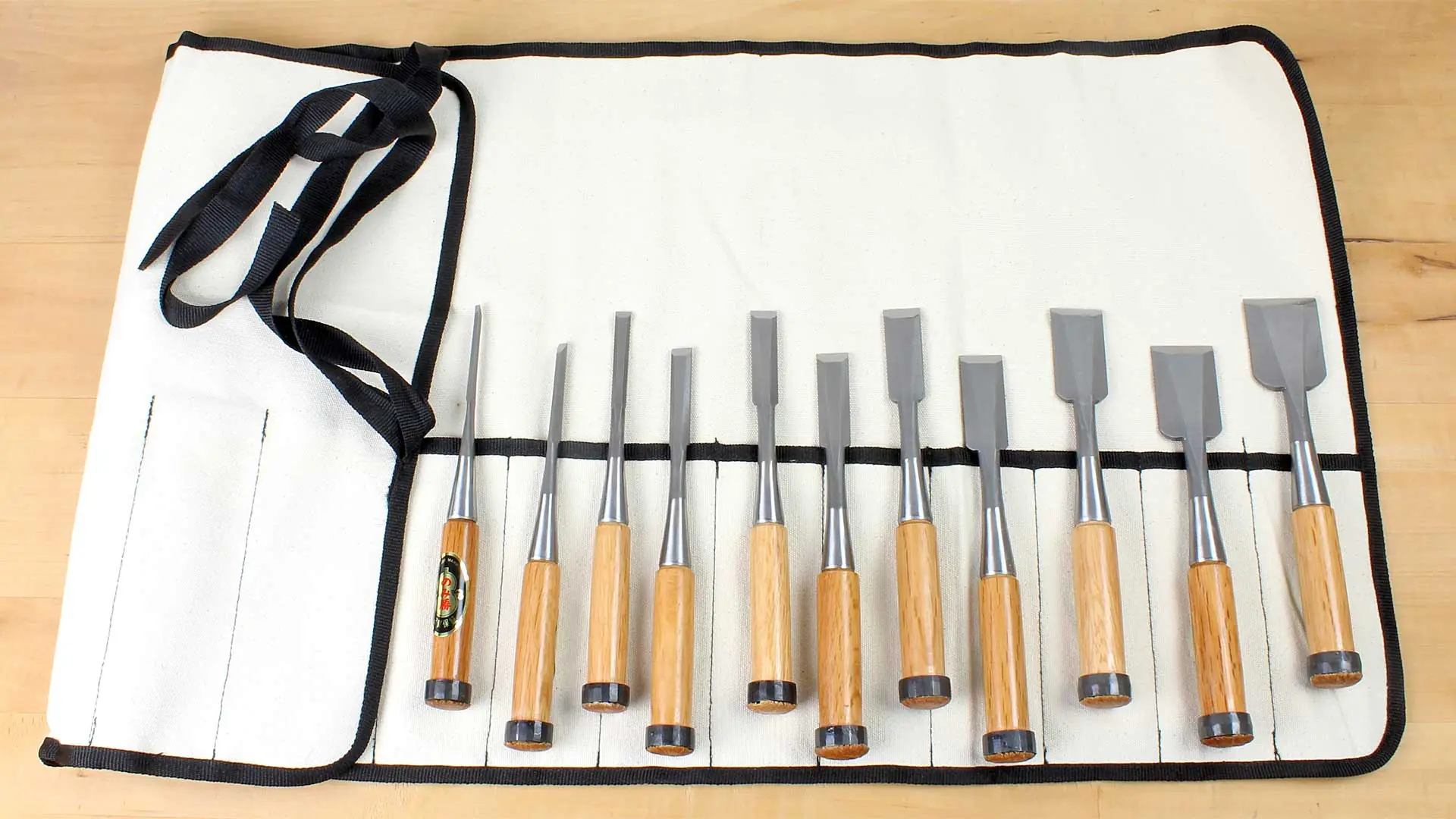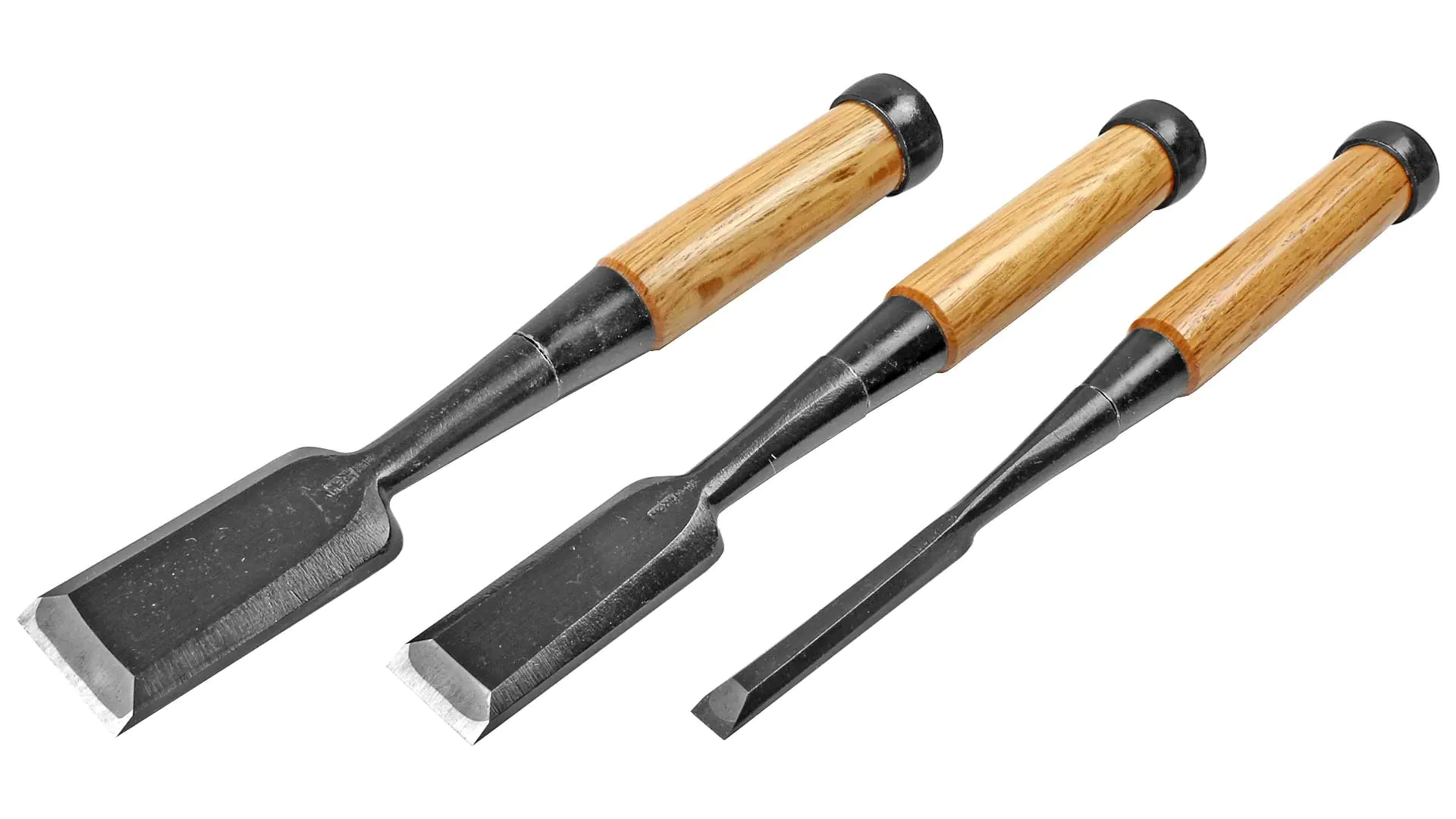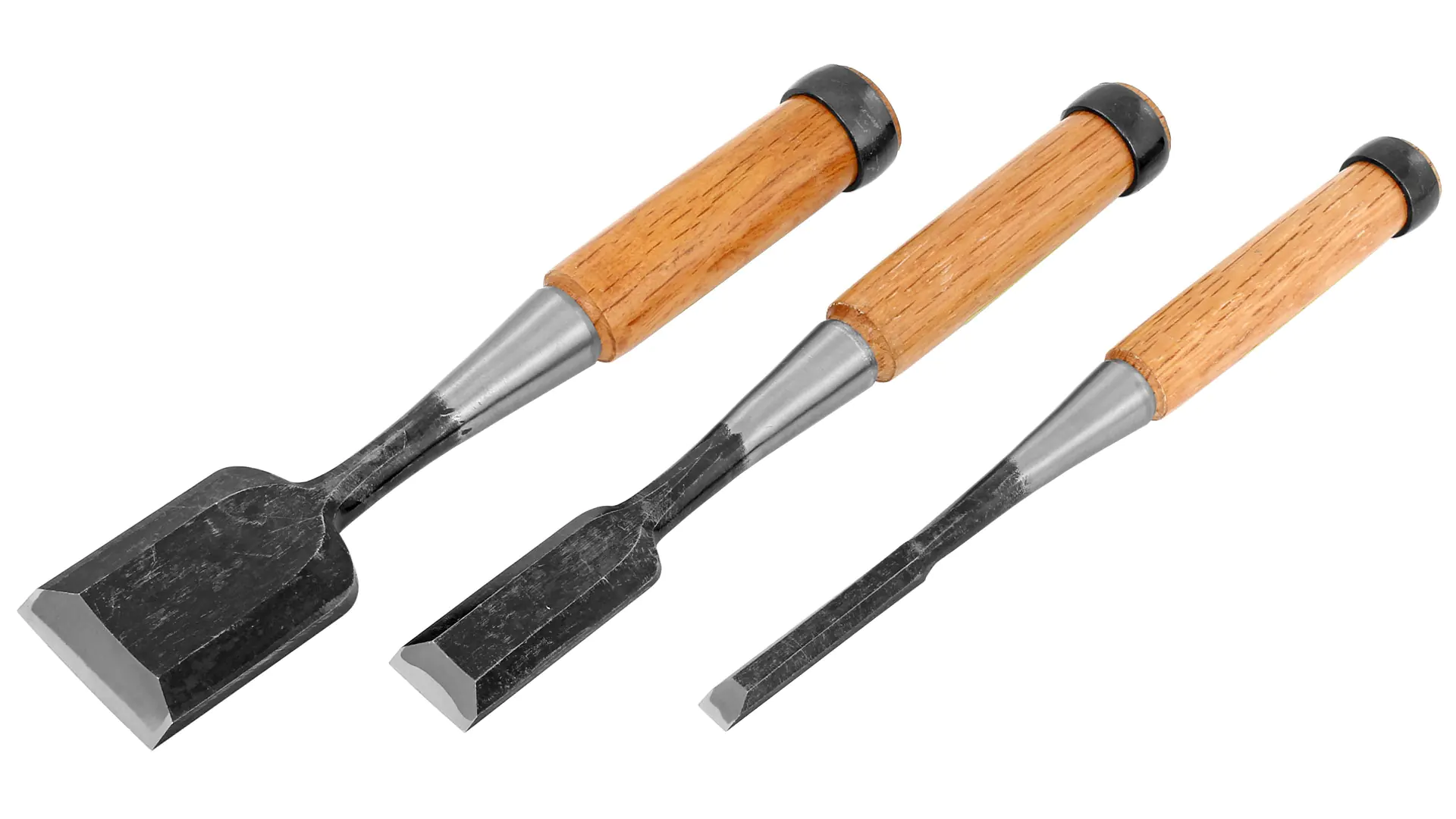-
Tools
- Japanese saws
- Western saws
- Chisel
- Marking & Scribing
- Planes
- Sculpting Tools
- Pliers
- Hammers & Mallets
- Axes, Hatchets & Adzes
- Crowbar, Pry Bar & Nail Puller
- Drawknife
- Assembly tools
- Woodturning Tools
- Clamps
- Fittings
- Safety knives, cutters
- Rasps
- Files
- Miscellaneous
- Promotion
- Drilling & Milling
- Machine Accessories
- Workshop
- Sharpening & Grinding
- Surfaces
- Measuring & Testing
- Household & Garden
The mirror side of Japanese chisels is hollow ground to facilitate honing. Often, people ask what to do with the chisel when it is ground down to the point where the hollow grind reaches the cutting edge. I can reassure you: By regularly honing the mirror side (which is the flat back), the hollow grind continuously and slowly moves backward, allowing you to maintain your straight edge. You can safely forget this concern. On the contrary, many users find that excessive honing or even grinding of the mirror side enlarges the flat area between the edge and the beginning of the hollow grind.
In Japan, the chisel is usually struck with a steel hammer, but you may also use the customary wooden mallet. All chisels offered on this page are approximately 22 – 23 cm (8-13/16 – 9 in.) long.
The forges in Japan that produce chisels are very small, often one-man operations. From the inside, they resemble a village smithy. At first, it seems hard to imagine that the world’s best chisels come from such low-tech operations. But indeed they do, with the skill and experience of the blacksmith being crucial.
We offer several product lines:
Affordable standard chisels from the "Hikoza" brand. They offer very good practical quality. The chisel is made of pure carbon steel and is harder, yet somewhat more sensitive than European chisels. These chisels are drop forged.
HSS Steel Chisels:
For a long time, no chisels were made from HSS steel because it was not fine-grained enough to achieve truly sharp edges—until a relatively fine-grained one was developed. The HSS steel of these chisels can be made very sharp, but their much more outstanding feature is their robustness. With carbon steel, small parts of the edge can chip away relatively quickly with poor treatment, but this does not happen here. You can really get down to business with them without having to be overly cautious. The sharpening effort is slightly higher than with carbon steel.
Fujikawa
The Oire Nomi come from the FUJIKAWA forge in Miki City, Hyogo Prefecture. These very well-crafted chisels are forge-welded and stand up to any comparison. The cutting steel is made from White Paper Steel (Shirogami No.2), and the handle is crafted from red oak. The ferrule is applied so that the handle extends about 1 mm beyond the ferrule edge. When striking with the hammer, you hit the wood and not the metal, which is important because Japanese chisels are traditionally struck with a steel hammer and not a wooden one. Over time, a mushroom head forms over the ferrule, as desired with Japanese chisels.
KOSHIMITSU
The blacksmith Yasushi Hanyo continues the KOSHIMITSU brand after Mr. Matsumura, who supplied us for over 20 years, retired. Yasushi Hanyo works practically next door, in Yoita, Niigata Province. Yasushi Hanyo is a very experienced blacksmith and produces chisels of the highest quality and finesse. The chisels are hand-forged from White Paper Steel, an especially fine-grained carbon steel, which allows you to achieve extreme sharpness when sharpening and honing, as only a few steels can.
Available, delivery time: 1-3 businessdays within Germany
Available, delivery time: 1-3 businessdays within Germany
Available, delivery time: 1-3 businessdays within Germany
Available, delivery time: 1-3 businessdays within Germany
Available, delivery time: 1-3 businessdays within Germany
Available, delivery time: 1-3 businessdays within Germany
Available, delivery time: 1-3 businessdays within Germany
Available, delivery time: 1-3 businessdays within Germany
Available, delivery time: 1-3 businessdays within Germany
Available, delivery time: 1-3 businessdays within Germany
Available, delivery time: 1-3 businessdays within Germany
Available, delivery time: 1-3 businessdays within Germany

